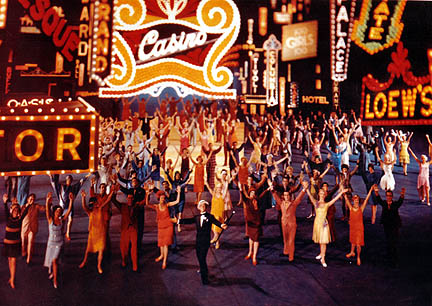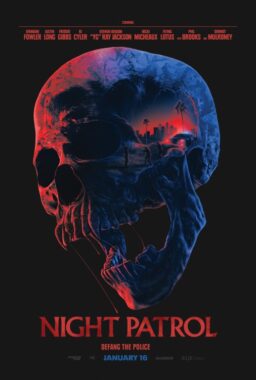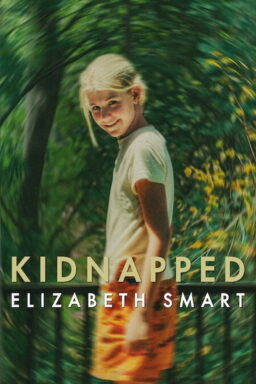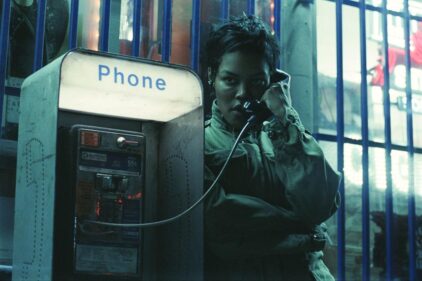The image that everyone remembers from “Singin’ in the Rain” has Gene Kelly, dressed in a yellow slicker, hanging from a lamp-post and swinging his umbrella in the wild joy of new love. The scene builds to agloriously saturated ecstasy as Kelly stomps through the puddles of water in the gutters, making big wet splashes.
The entire sequence, from the moment Kelly begins to dance until the moment the cop looks at him strangely, is probably the most joyous musical sequence ever filmed. It celebrates a man who has just fallen in love and has given himself over to heedless celebration. And the rainwater provides the dancer with a tactile medium that reflects his joy in its own noisy way.
“Singin’ in the Rain” has been voted one of the greatest films of all time in international critics’ polls, and is routinely called the greatest of all the Hollywood musicals. I don’t think there’s any doubt about that. There are other contenders–“Top Hat,” “Swing Time,” “An American in Paris,” “The Band Wagon,” “Oklahoma,” “West Side Story“–but”Singin’ in the Rain” comes first because it is not only from Hollywood, it is about Hollywood. It is set at the moment in the late 1920s when the movies first started to talk, and many of its best gags involve technical details.
A restored print of the movie, made from the original three-strip Technicolor process with its brilliant reds and yellows, is going into national release to celebrate “Rain’s” 40th anniversary. It is also available in video, including high-quality laserdiscs from MGM and Criterion. Looking at it again shows that the movie still has every ounce of its original charm, but then that didn’t come as a surprise to me since I’ve seen it at least once a year since the first time I saw it, at Chicago’s late, lamented repertory house, the Clark Theatre.
Unlike most of the movie musicals of recent years, “Singin’ in the Rain” was not based on a Broadway stage production; it worked the other way around, with a London and Broadway musical in the 1980s being based on themovie. The original screenplay held up so well that the Tommy Steele stage version in London followed the film even in small details.
The movie was cobbled together fairly quickly in 1952 to capitalize on the success of “An American in Paris”–which won the Academy Award as the best picture of 1991, also starred Gene Kelly, and had the same director, Stanley Donen. The new movie had an original screenplay by Adolph Green and Betty Comden, and new songs by Nacio Herb Brown and Arthur Freed. But some of the songs, including the famous title tune, were anything but new. The Criterion Collection laserdisc includes old film clips of a version of “Singin’ in the Rain” from “Hollywood Review of 1929,” “You WereMeant for Me” from “Broadway Melody of 1929,” and “Beautiful Girl” from the Bing Crosby musical “Going Hollywood” (1933).
Film historian Ron Haver, who does the scene-by-scene commentary on an alternate sound track of the laserdisc, points out that “Singin’ in the Rain” was not immediately hailed for its greatness. It did well at the box office, but won no Academy Awards and was on no critics’ year-end lists of best films. Only after it went into repertory in 1958, as part of a package of MGM classics, did audiences begin to realize how special it was.
Influential critic Pauline Kael was managing a repertory theater in Berkeley then, and her program notes, calling the movie “just about the best Hollywood musical of all time,” helped establish the movie’s eventual reputation.
Maybe because the movie was made quickly and with a certain freedom (and because it was not based on an expensive stage property), it has a wonderfully free and improvisational feeling. We know that sequences like Donald O'Connor‘s neck-breaking “Make ‘Em Laugh” number had to be painstakingly rehearsed, but it feels like it was made up on the spot. So does “Moses Supposes,” with O’Connor and Kelly dancing on tabletops.
Debbie Reynolds was still a teenager when she starred in the movie, and there is a light in her eyes to mirror the delight of her character, who is discovered leaping out of a cake at a party, and soon becomes the offscreen voice of Lina Lamont (Jean Hagen), a silent star whose voice is not suited to talkies, to say the least. The movie’s climax, as Reynolds flees from a theater while Kelly shouts out “Stop that girl!” and tells everyone who she is, and that he loves her, is one of those bravura romantic scenes that make you tingle no matter how often you see it.
There’s great humor in “Singin’ in the Rain,” too, especially in the scenes that deal with the technical difficulties of the early days of talkies. Lina Lamont can never seem to remember which flower arrangement holds the concealed microphone, and so her voice booms and whispers as she turns her head back and forth. This was not an imaginary problem for early actors in the talkies; Chicago bandleader Stanley Paul collects early soundmovies with scenes that reflect that very problem. Although “Singin’ in the Rain” has been on video in various versions for a decade and is often seen on TV, a big-screen viewing will reveal a richness of color that your tube may not suggest. The film was photographed in bold basic colors–the yellow raincoats are an emblem–and Donen and his cast have an energy level that’s also bold, basic and playful. But is this really the greatest Hollywood musical ever made? In a word, yes.



















